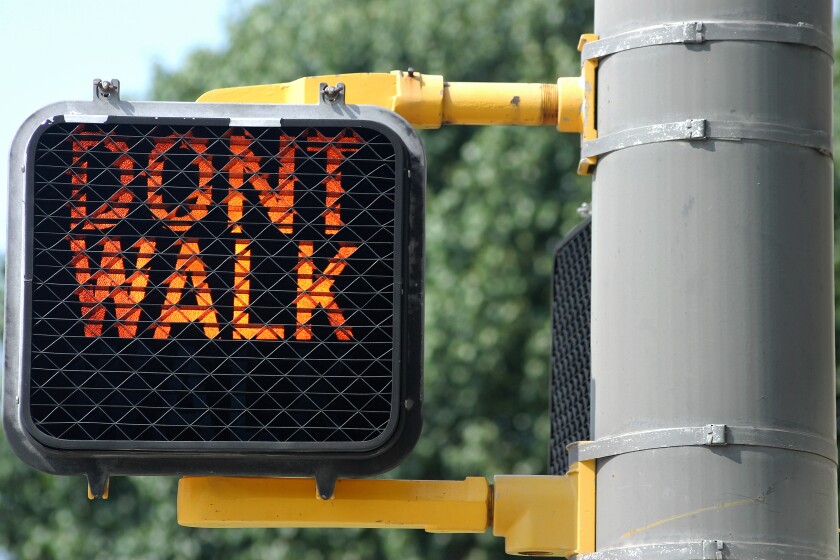In 2011, 4,457 people were struck and killed by U.S. drivers. By 2020, that number had increased 46 percent to 6,515 deaths, which accounted for 17 percent of all traffic fatalities that year. The most recent data from the GHSA estimates that more than 3,400 pedestrians were killed in just the first half of 2021.
While California, Florida and Texas had the greatest number of fatalities last year, Maine, Vermont and Wyoming saw the greatest proportional increases.
Given the wide range in geographic and population sizes amongst the states, there is a proportionally wide range in the states’ fatality numbers. California has seen the greatest number of fatalities in the first half of 2021, with 470 pedestrian lives lost, followed closely by Florida, 444, and then Texas, 375. Many of the smaller states had less than 10 fatalities in the first six months and Vermont and Nebraska each only had three deaths.
To properly account for the varying sizes of the states, progress of each states’ traffic safety is presented more clearly in the year-to-year change. Despite tying for the lowest number of fatalities in the first half of 2021, Vermont saw the worst rate of change from 2020 to 2021. Only one pedestrian Vermonter was struck and killed by a vehicle in 2020, making the increase to three deaths in the first half of 2021 a 200 percent increase. Maine also had a 200 percent increase in deaths, increasing by six fatalities.
The report also found that just three states — California, Florida and Texas — accounted for 37 percent of all pedestrian deaths nationwide in the first half of 2021; these three states also account for 27 percent of the U.S. population, as reported by the 2020 U.S. Census. This finding is consistent with previous years’ pedestrian fatality reporting from the GHSA.
Though the preliminary data predicts a 17 percent rise in pedestrian traffic fatalities in 2021 as compared to 2020, traffic patterns were impacted by the coronavirus pandemic, which may have yielded lower numbers in 2020 than a typical year. The data shows that some states saw a decrease in the number of traffic fatalities from 2019 to 2020, likely caused by COVID-19, which may have inflated the 2020 to 2021 change. For example, the 2021 preliminary numbers for Alabama show a sharp increase from the year prior but a general return to the data from 2019; similar comparisons can be made for several other states, including Kentucky, Maine, Montana, New Hampshire, New Jersey, North Dakota, Oregon, Vermont, West Virginia and Wyoming.
It is important to note that the GHSA data has been slightly adjusted to not only account for historical underreporting but also because 2020 was an anomalous year due to coronavirus shutdowns and travel restrictions.
Related Articles













